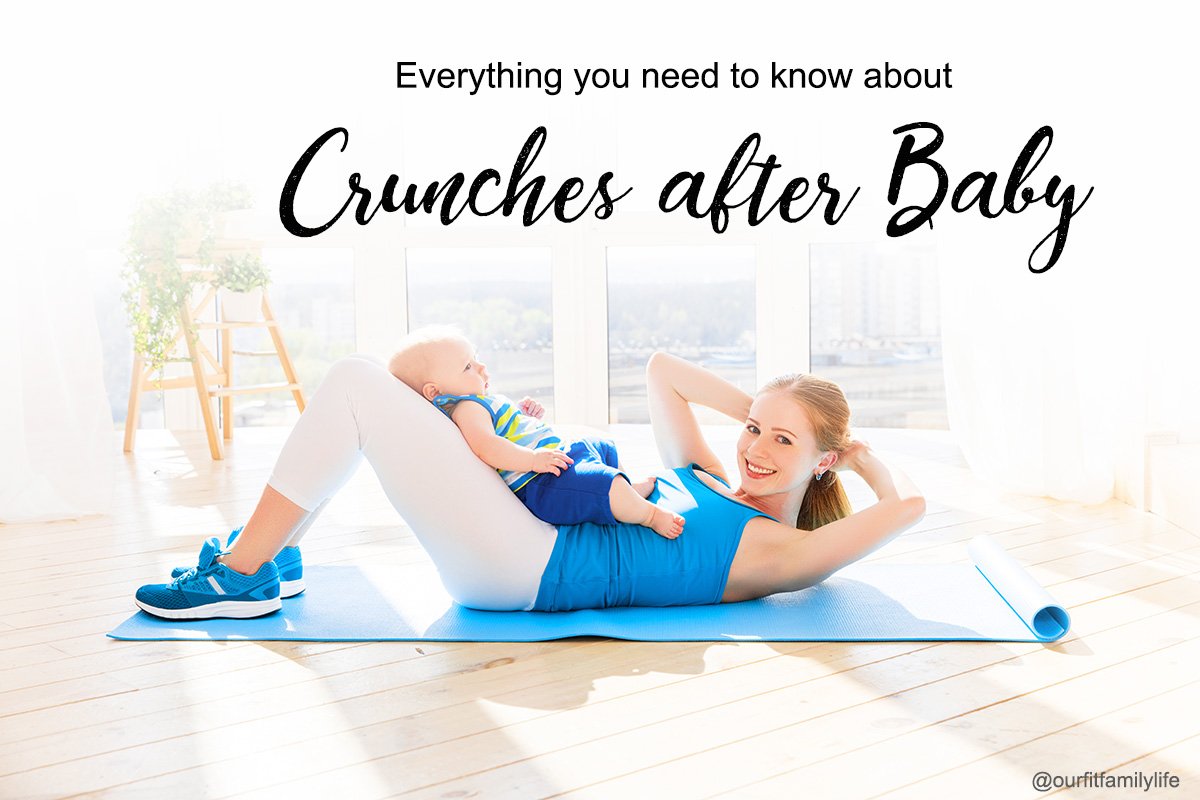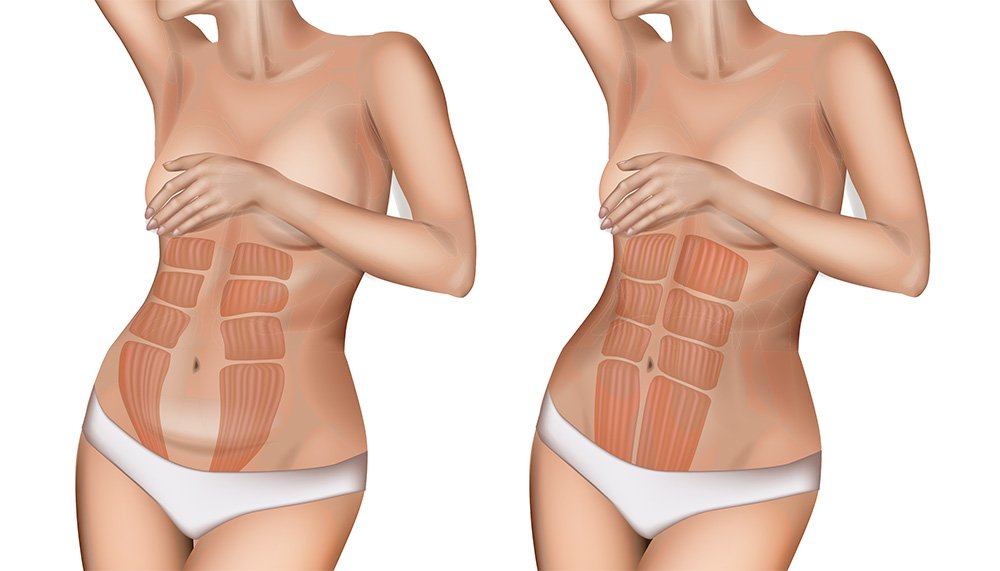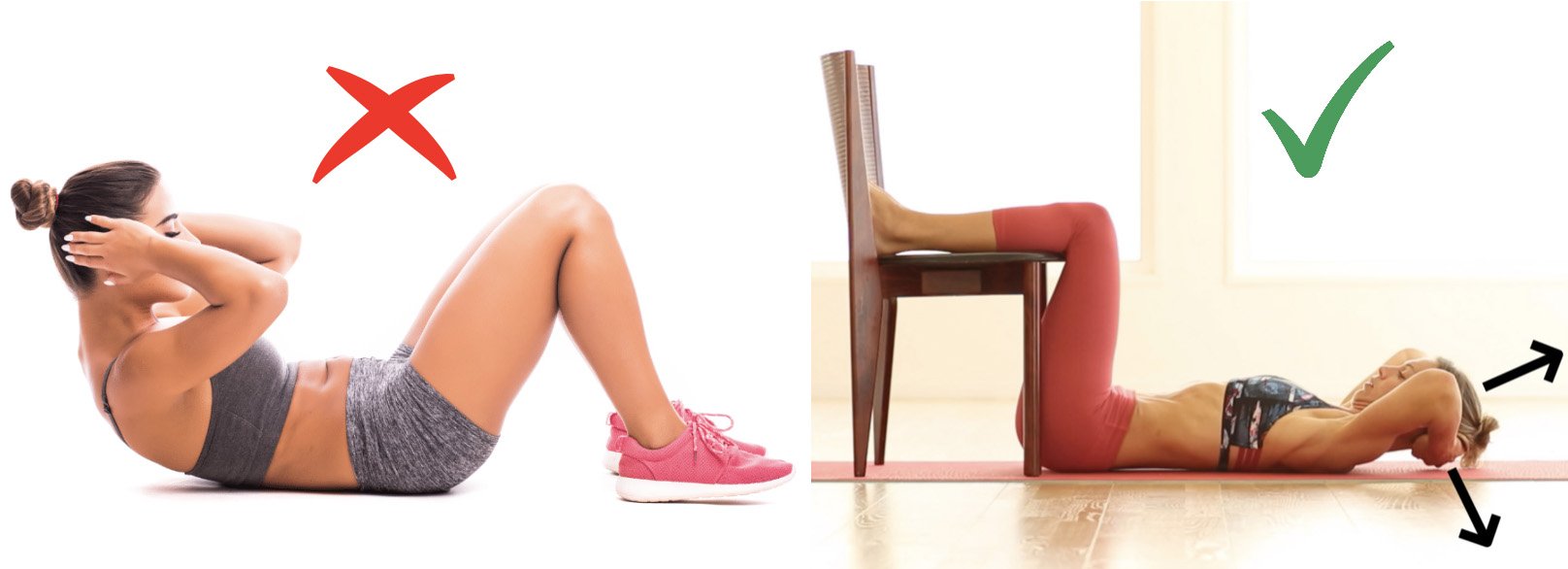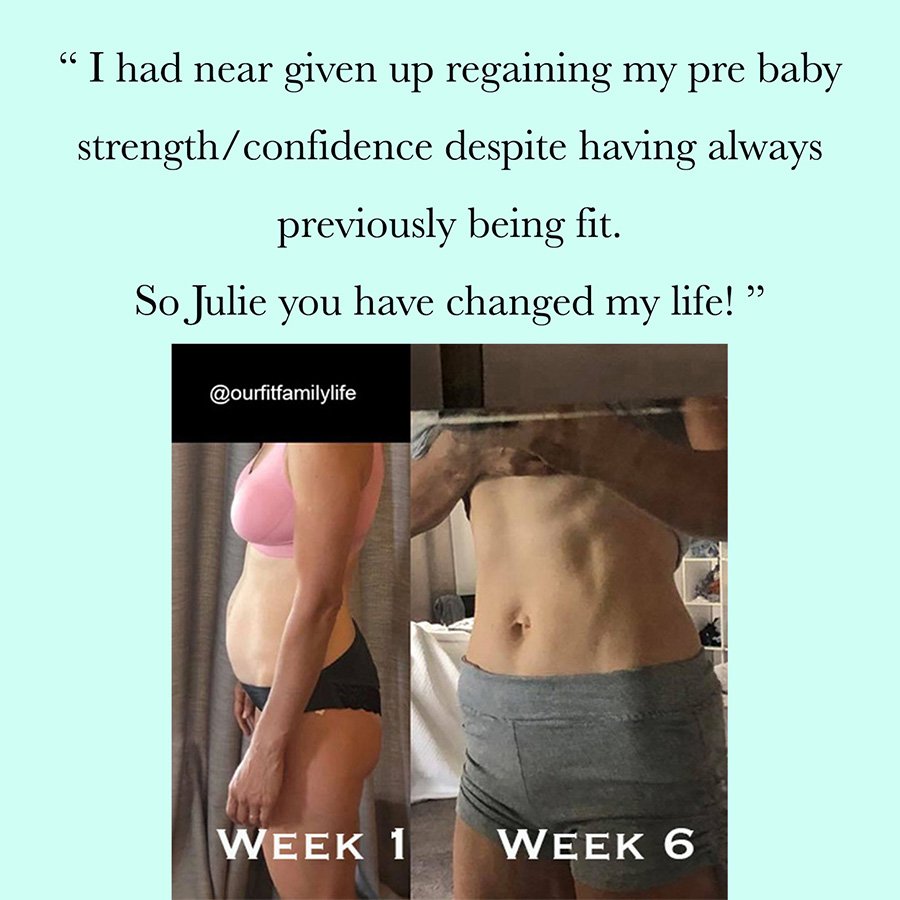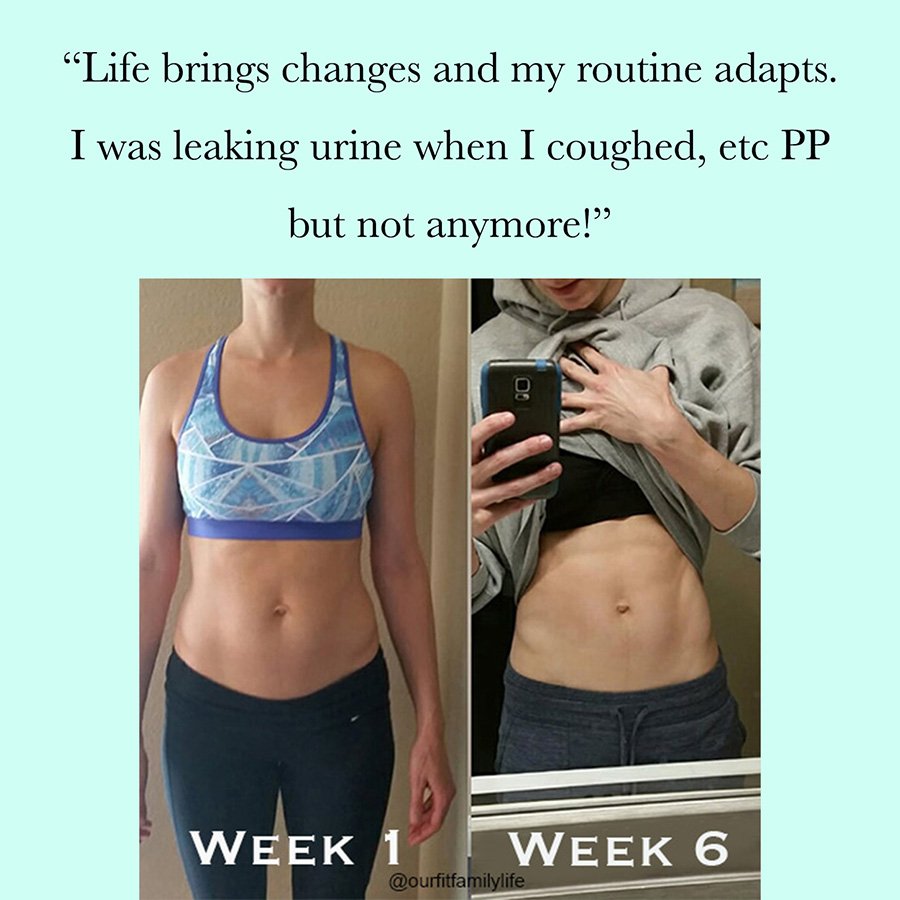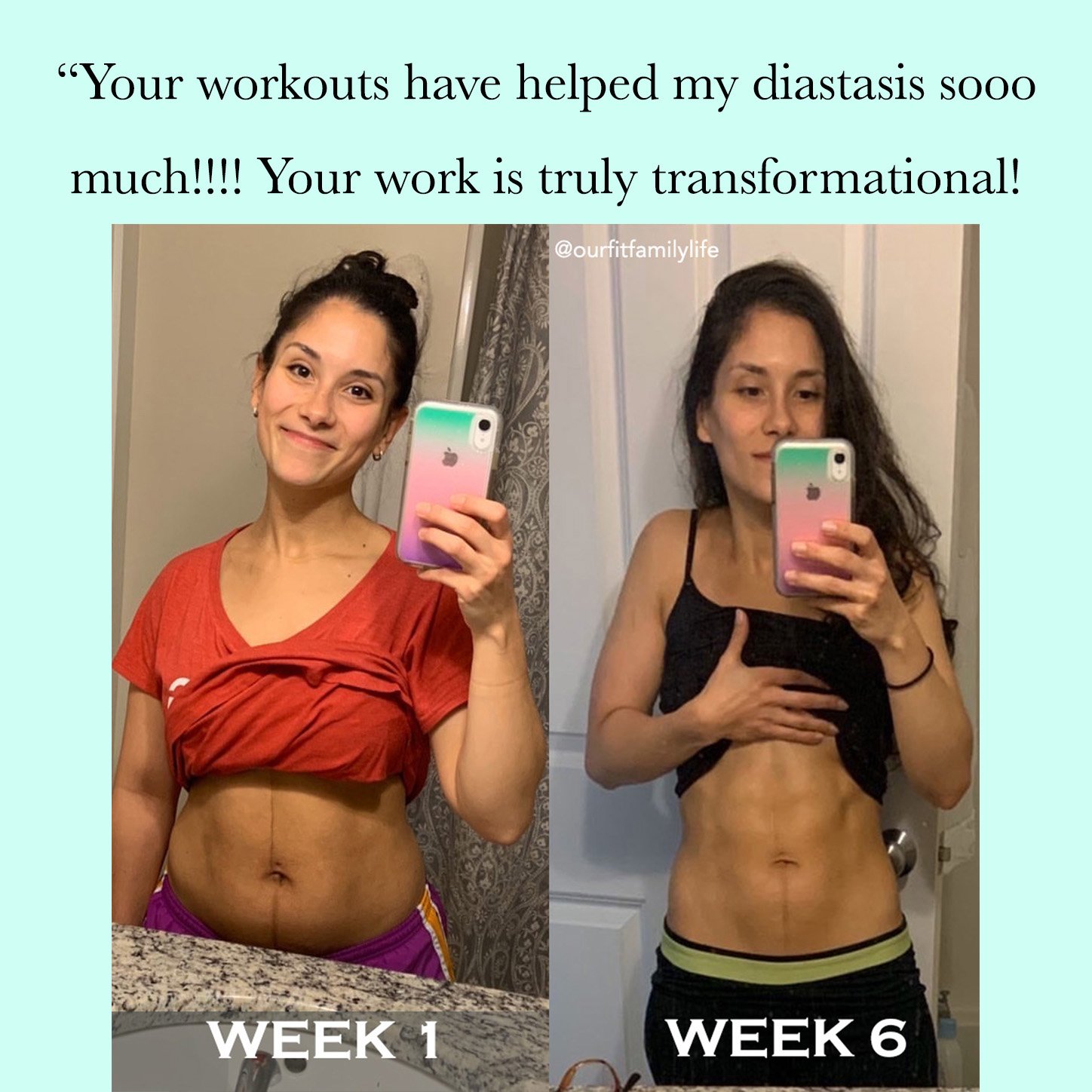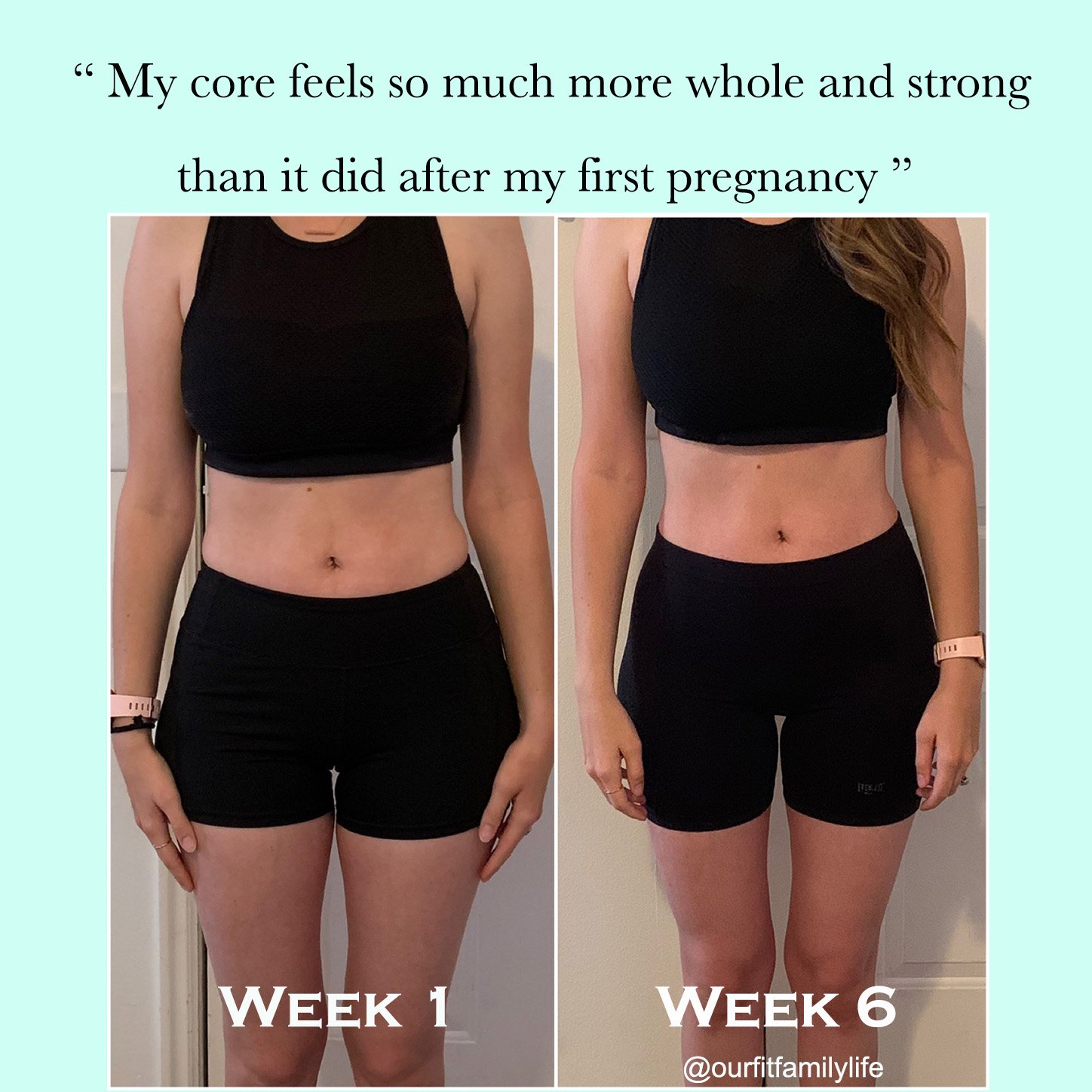Have you ever looked in the mirror and told yourself, “Argh… I need to get back to doing my crunches!”
Unfortunately, the vast majority of moms turn to the wrong exercises to improve their core strength and the way their belly looks.
In this article:
We’ll see why I don’t recommend crunches as postpartum exercises.
Then we’ll talk about crunches after you’ve rehabbed your core.
I’ll lay out everything you need to know so you can make the best decision for yourself.
Like many of my students, true core strength, pelvic health, and a flatter stomach may be just around the corner!
crunches and “intra-abdominal pressure”
To understand the effects of crunches on your core, you need to understand the concept of intra abdominal pressure (the pressure inside your abdomen). It may be a little technical, but I’ll make it short and simple, so stick with me!
Let's imagine that your abdominal cavity is like a balloon. A balloon whose top is the diaphragm, whose rear is the spine, whose bottom is the pelvic floor, and front is the abdomen.
The shape of this balloon can change, it can be squished in one or multiple dimensions, and like a balloon, any change of shape affects the entire abdominal cavity. However, our abdomen is not a balloon with equal parts. The top and back of our abdomen are made of powerful muscles and bones, which are much stronger than the other parts.
When you do a crunch, the pressure in your abdomen rises, regardless of how you perform them:
Downward on your pelvic floor,
and forward behind your ab midline.
Note that intra-abdominal pressure isn’t “bad”, it’s actually necessary. We all need some intra-abdominal pressure for spinal stability. However, pressure always takes the path of least resistance and in a compromised core we can lose the ability to manage the increased pressure in some positions, which can lead to pelvic floor and core issues.
3 REASONS WHY CRUNCHES AREN’T SAFE POSTPARTUM EXERCISES
Crunches place a lot of stress on your ab muscles.
#1 Why postpartum Moms shouldn’t do crunches
During pregnancy, your abs and linea alba naturally stretch to accommodate your growing baby. The linea alba is the line of connective tissue that runs lengthwise down your core. It connects the two sides of your rectus abdominis muscles (superficial ab muscle, aka your “6 pack abs”). To allow your baby to grow in your belly, this connective tissue stretches, gets wider, and thinner as your stomach gets bigger and bigger.
Once postpartum, your abs and ab midline are trying to heal and regain their pre-pregnancy lengthen and tension.
Crunches target the superficial abs. They require your ab midline to transfer tension and the two sides of the abs to function correctly. When your abs can’t function properly, crunches place a lot of stress and strain on these lengthened and weakened muscles.
So not only can crunches inhibit the postpartum healing process, but they could also lead to further damage.
Let’s dig into that.
Crunches can aggravate or increase your chances of developing a diastasis recti.
#2 Why postpartum Moms shouldn’t do crunches
Diastasis Recti is the injury component of the natural abdominal separation that occurs during pregnancy. It is often characterized by a rounded and protruding belly.
Suppose you’re diagnosed with a diastasis recti at your postpartum checkup. It would mean that your abs are separated by a 2 finger gap or more (width of the gap when testing your diastasis recti) and that your linea alba has lost integrity and is unable to transfer tension (squishy ab midline when testing the depth of the gap).
If you’ve done crunches before, you probably remember that they push your belly outward.
I recommend avoiding any exercise that pushes your ab muscles out rather than pulling them in. I recommend this to anyone, but it’s even more critical for mothers who want to heal their ab separation.
The stress of crunches upon your injured abdominal wall stresses the connective tissue even more, preventing it from regenerating and healing. In other words: with repeated crunches, the degree of separation and the thinning of the ab midline can actually worsen, bringing you a few steps backward in your recovery.
Crunches place excessive stress and pressure on your weakened pelvic floor.
#3 Why postpartum Moms shouldn’t do crunches
As mentioned above, the pressure inside your abdomen rises when you do a crunch.
Because of pregnancy, every mom has a weakened pelvic floor regardless of if they had a vaginal birth or a C-section.
The increased pressure caused by the crunch will hone in on the weakened areas and can aggravate the situation, potentially causing severe problems such as incontinence or pelvic organ prolapse.
Your pelvic organs and pelvic floor muscles really don’t need any more downward force after birth.
Crunches place excessive stress and pressure on a new mom’s weakened pelvic floor and ab midline
3 THINGS TO KEEP IN MIND IF YOU PLAN TO RESUME CRUNCHES AFTER YOUR CORE REHAB
Let’s say that your inner core is essentially “healed.” You’ve restrengthened your core, healed your diastasis recti, and improved your core function. Congratulations!
Does this mean that you can return to traditional ab exercises such as crunches?
Before answering this question, it’s important to remember two things:
We are postpartum forever
We don’t need to do crunches to have great-looking abs!
Now, here are three keys you’ll want to keep in mind:
Even once healed, your ab midline and pelvic floor remain weakened areas.
#1 Why crunches aren’t the best core exercises
I’ve had a few students come back to me because they’ve undone the progress they made during their core rehab, by resuming crunch style exercises.
A diastasis recti can “re-open,” your back and pelvic floor issues can return. Remember what I wrote above: once we go through pregnancy, we are postpartum forever!
I recommend staying away from crunches and any exercises that push your belly out or shorten your ab wall, even once you’ve healed your core after baby.
There are safer core exercises that can get the job done more effectively (keep reading!)
Crunches don’t train your ab muscles to do the job they were designed for.
#2 Why crunches aren’t the best core exercises
The ab muscles’ main job is to secure and stabilize the spine, help you maintain a natural spinal curve, and help you with posture. The abdominal muscles contract to brace the spine and protect it.
Crunches are not “functional” because they don’t apply to movement patterns we perform in our daily life.
Even if you think that sitting back up from the bed could be associated with a crunch or sit-up, it’s actually much better for your back and inner core to roll to your side. Just because you can do something doesn’t mean that it serves your body.
Crunches target the superficial ab muscles instead of deep core muscles.
#3 Why crunches aren’t the best core exercises
The rectus abdominis (the “six-pack” muscles) aren’t the most important for true core strength or flat abs. If you want to develop real core strength that supports the body in motion and flattens your stomach, then you need to work on a deeper level.
Abdominal breathing exercises, planks, and more inclusive core work are the best methods of strengthening every part of the core (six-pack muscles included!) in the most balanced and effective way possible. A high-functioning core leads to a better-looking core!
Note that in addition to these 3 points, you can also find studies showing a link between crunches, disc herniation, and poor posture. I won’t talk about them here because they are highly debated, and I believe that we need to see more studies on these subjects.
how to modify crunches ?
You may want to limit the flexion to what Pilates calls an “ab-prep”
#1 Crunch alternative
If, despite this information, you really want to resume crunches, then here are some extra recommendations so you can protect your core as much as possible.
Slightly raise your shoulders and head off the mat, mind your form and use self-monitoring:
Be sure you can manage the pressure on your pelvic floor: you shouldn't feel pressure on your pelvic floor.
Be sure you can manage the stress behind your ab midline: you shouldn't see any coning along your ab midline.
You shouldn't see your lower tummy become bigger while lifting your shoulders off the mat.
You shouldn't experience neck or back pain during or after your workout.
I recommend exhaling from the bottom up to protect your pelvic floor as much as possible.
If you can’t perform ab-preps with perfect form, don’t be too proud to back off. Once again, there are safer and more effective core exercises than crunches out there!
Pilates ab prep - This exercise can be done without the resistance ring
Here’s what to do when you need to replace crunches in your fitness classes
#2 Crunch alternative
You can switch to another exercise such as planks, or any abdominal breathing exercise you've learned in my programs.
You can modify to a “counter-crunch”. This exercise looks pretty close to a crunch, but it’s much safer for your inner core! Check out the second video on this post. Use my abdominal breathing technique and push your head into your hands on the exhale. Relax on the inhale, and repeat.
Counter-crunch - This exercise can be done without the chair
So, are you willing to consider some better alternatives than crunches?
You may become like my student Rona who thought she needed to do ”xx crunches and xxx bicycle curls to have a flatter tummy” but learned that she was actually doing more harm than good!
Or Melissa, who realized after following my program that “no other workout (even before baby) has ever produced results like this .”She always struggled with a softer core, and she’s now “feeling strong, toned, and motivated.”
Thousands of women from all over the world have reached out, saying how much my exercises have helped them. It's incredible to hear their testimonials, and it makes my heart so happy to see women living their best life without leakage, aches, pain, or confusion about pre & postnatal fitness and core strengthening.
Hope to see you in one of my programs someday!

